Tourism during COVID-19 took the worst beating. This sector was almost annihilated. We waited in the rink and at the first possible opportunity, we travelled out as safely as we could. During the course of our travel with COVID, we felt corona in India was a bigger problem for the cities. Villages with abundant open spaces were safer. There are no flocking or visiting tourist spots here. You can just be. Here are glimpses of beautiful Indian villages, that should be on your bucket list.
Village tourism in India
Most people travel with a busy itinerary and land up being more tired during vacations than during work. Slow travel in India is still at a nascent phase. However, we have always travelled easy and have taken the time to absorb new experiences. Whenever possible, we have enjoyed the pleasure of early morning or late afternoon village walks, tasted local cuisine, checked out local handicrafts and experienced local music. We have been richer by the experience of speaking with local villagers, discussing world views, asking questions and answering questions. In our opinion, village tourism would be the key focus of tourism in the post corona world. Local tourism would surge as people may not want to travel far. The key would be responsible travel in a manner that you are safe and you do not intrude in the lives of others.
Walking in Indian culture
We are posting short experiences of some village walks that we have enjoyed in the course of our travel. These have been like cultural studies, with nothing touristy about such experiences. Rather, we created memories for life. This is going to be an ongoing post. Whenever we have new experiences, we will those add here. So do keep visiting.
Beautiful Indian villages in the hills
Jhaltola, Pithoragarh
This Uttarakhand village, a heaven on earth is about 7 hours’ drive from Kotdwar, the nearest railway station to Nainital. With a mix of snow-clad Himalayas, pine and oak trees, quaint hilltop temples or cave shrines, walks and treks, local crafts, weaves and natural dyes, and last but not least, Kumaoni meals, Jhaltola in Uttarakhand is as eclectic as it could get.
How to reach – We took a Shatabdi from New Delhi Railway Station and dropped at Kotdwar. From there, a taxi took us to the base of Jhaltola hill. The last bit of elevation was in a customised jeep sent by our resort.
Where to stay – We stayed at the beautiful and comfortable Misty Mountains.
What to see – Jhaltola provides view of the Western Kumaon Range of the Himalayas. In fact, we could see Trisul, Nanda Devi, and Panchchuli peaks from our rooms. We also took walks in the quaint villages surrounding our resort, went for a trek to a mysterious Shiva temple, visited Patal Bhuvaneshwar temple, and soaked in the pure mountain air to our lungs content.
Also Watch:
Khanag, Tirthan Vally
We reached Khanag Village in Himachal Pradesh rather perchance. We went out for a hill hike from Tirthan Angler’s Retreat, the resort that we inhabited in Tirthan Valley. We lost our way atop the hill. Phone connectivity was out too. Just when we were about to panic, a man appeared from nowhere. He seemed busy and focused on the road. But, he was our only bet and we intercepted him and asked for directions. On knowing we were travellers, he took us to the local temple with the most artistic wood carvings of a Snake God. We took some pictures and then this very nice chappie took us to his village on the hill. He showed us his house and his wife made tea. She also taught our companion how to tie a scarf around the head in Himachali style. The whole experience seemed surreal!
How to reach – We took the Himachal Pradesh Tourism Department bus from Delhi and dropped at Aut, an hour before Manali. We took a taxi to Tirthan Angler’s Retreat, Tirthan Valley from there. Khanag is in Banjar near Tirthan Valley.
Where to stay – There is no dearth of staying options in Tirthan Valley and they cater to all requirements and budgets. We stayed at the picturesque Tirthan Angler’s Retreat at Banjar.
What to see – Do hike up to the snake temple that is sheer art! The villagers here are very very friendly and hospitable, and you would be lucky if you could spend some time with them. It is a lush and verdant space in the Himalayas so just soak in nature.
Also Watch:
Sarchi, Kullu
Himachal Pradesh has so much more to offer than Shimla, Manali, or Kasaul. Sarchi Village was another spot that we visited from Tirthan Angler’s Retreat thanks to the recommendations of our host Dilsher Mann. Sarchi Village is some kilometers above Banjar. The village was straight out of that Himachal we did not see before.
How to reach – As mentioned above, we took the Himachal Pradesh Tourism Department bus from Delhi and dropped at Aut, an hour before Manali. We took a taxi to Tirthan Angler’s Retreat, Tirthan Valley from there. Sarchi Village was almost an hour’s drive uphill from Tirthan Angler’s.
Where to stay – Please see relevant section above in Khanag.
What to see – If you are open to new experiences, you see a dream. There is nothing touristy here but the whole village looks like a painting. There are apple orchards everywhere and among these are beautiful wood Himachali houses with gabled roofs to let the snow slide off. We also saw the beautiful idol of the locally revered Goddess Gara Durga. Outside the house of the devotee where the idol had been placed, a group of women were cleaning freshly harvested garlic pods. An old-style granary and local women carrying baskets on their back almost completed the album. They were draped in traditional Himachal woven pattu shawls with enchanting borders. These shawls are rarely woven or found now. A full rainbow on our way back completed the picture. It has been a while, but writing about this still gives us goosebumps.
Kyari, Jim Corbett
Down to the plains now, we have been to Jim Corbett National Park many a time. This time, we walked to the adjacent Kyari Village. Kyari is not just a village, it is a real-life scenario of man living with the wild!
How to reach – There are myriad ways of reaching Jim Corbett National Park. The most popular mode of transport is driving from Delhi and it takes about 6 hours with moderate traffic.
Where to stay – We stayed at Alaya Resort adjacent to Kyari Village. There are many accommodation options at Jim Corbett though that caters to all kinds of budgets and lodging requirements.
What to see – Kyari is a beautiful village still retaining the rustic charm. It is adjacent to a slow-flowing picturesque river complete with stones and boulders just as you would see in a 70s Shammi Kapoor movie. Take your time to soak in this place. We also had the good fortune to have a Kumaoni dinner thanks to one of the villagers here.
Kondapalli, Vijayawada
We come a bit South now. Kondapalli Village in Andhra Pradesh is famous for its coloured wood toys. We had the lucky chance of visiting Kondapalli and found it to be a mesmerizing experience.
How to reach – We took a flight from Delhi to Vijayawada, the new capital of Andhra Pradesh. Kondapalli village is located at the base of Kondapalli Hills. This is a short drive from Vijaywada.
Where to stay – Your best bet is to stay at any of the umpteen hotels and guest houses at Vijaywada, barely 30 minutes drive from here.
What to see – You enter the village and see a very dusty zone. A little drive inside and you see Kondapalli workshops on both sides. The artisans procure softwood from the Kondapalli Hills and carve toys. These toys were earlier painted with lacquer-based dyes. Chemical dyes are used now. The village is remarkably clean and the villagers were very forthcoming. Many of the houses had a portion converted to a makeshift showroom. But others too were very cool about items that you showed interest. One lady let us enter the room where she was making small vegetables perhaps. If you have some more time, you can drive up to the 14th-century Kondapalli Fort, atop the hill.
Also Watch:
Mukhba Village, Harsil

Harsil Valley in Uttarakhand is a cluster of 7 or 8 villages. Few places can match the breathtaking beauty of the Mukhba Village, where every turn offered a new vista of snow-capped mountains and lush green valleys. The Ganga Temple here is the winter residence of the Ganga deity after Gangotri Temple is shut after Deepawali. The ornamental wooden houses and temples look like straight from a fairy tale.
Bagori Village, Harsil
Meet locals and see beautiful old abandoned houses at Bagori Village in Harsil, Uttarakhand which is a treasure trove of natural beauty and surrounding culture. There is a Buddhist Stupa that indicates Tibetan habitation. Sheep rearing is a common livelihood and the natural wool from sheep is knitted or woven into sweaters, shawls, hats, caps, and so on.
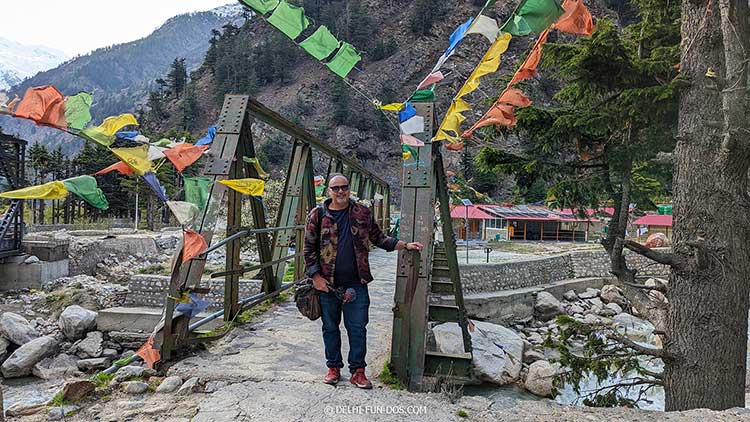
Given its direction, Bagori village is very windy. The colourful Buddhist prayer flags would flutter and it was getting difficult to keep our caps in place. Many of the ornamental wooden houses were locked here and reminded us of the ghost villages of Salla Rautela, Uttarakhand. We were told many villagers had winter houses in the warmer lower towns of Uttarkashi or Chamba. They would come back to their houses at Bagori once winter had ebbed and summer had set in.
How to reach – We drove from Delhi for about 14 hours with a few stops and reached Harsil. We visited Mukhba and Bagori in a local cab from our resort in Harsil. Attempt driving only if you are a seasoned hill driver since Uttarkashi to Harsil route is tricky.
Alternatively, you can take a train or bus to Rishikesh or Dehradun, take a further bus or cab to Uttarkashi, and then a private cab or shared cab to Harsil.
Where to stay – We saw basic homestays in Mukhba as well as Bagori. We stayed at the cozy Prakriti Resort in Harsil (https://delhi-fun-dos.com/the-ultimate-guide-to-harsil-uttarakhand-everything-you-need-to-know/).
What to see – You can hike up to the villages, visit temples and roam around! The villagers here are friendly and would happily share bits about their culture with you. You can buy natural wool knitted items at Bagori. Also, this region produces some of the best apples in India. If you visit in October, you can go for apple plucking excursions.
Some tips
- Once again, village tourism is all about slow travel. It may only work if you are open to it. Also, the concept of tourism is new to Indian villages that are way tighter social units than cities. Do respect their space and culture.
- On that note, dress appropriately and avoid being loud, ostentatious, and, last but not least, don’t be demeaning or patronizing.
P.S. – If you have experienced beautiful villages, do share the stories with us in the comments section.
PIN IT FOR LATER READ

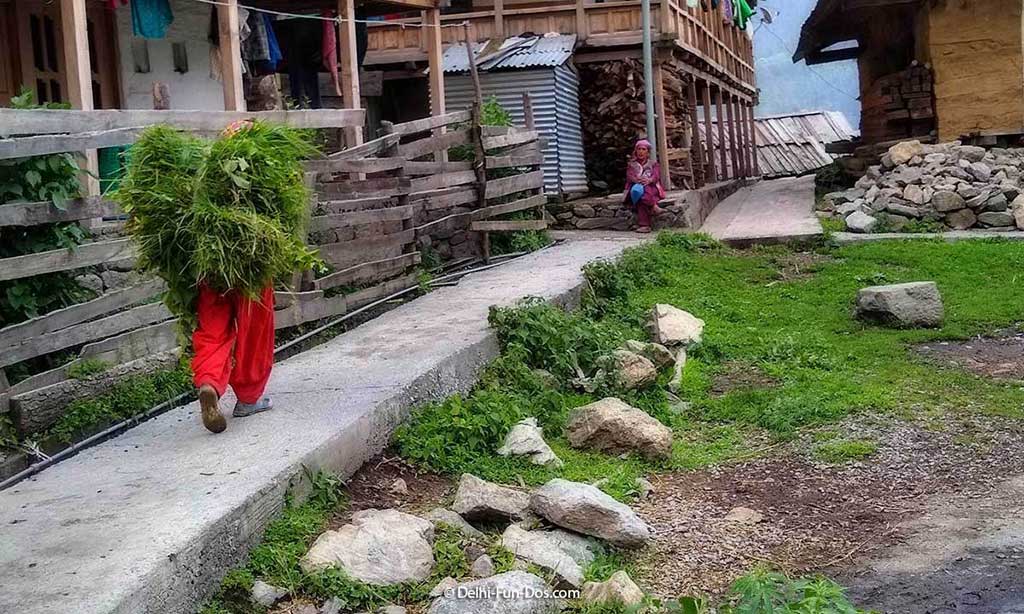
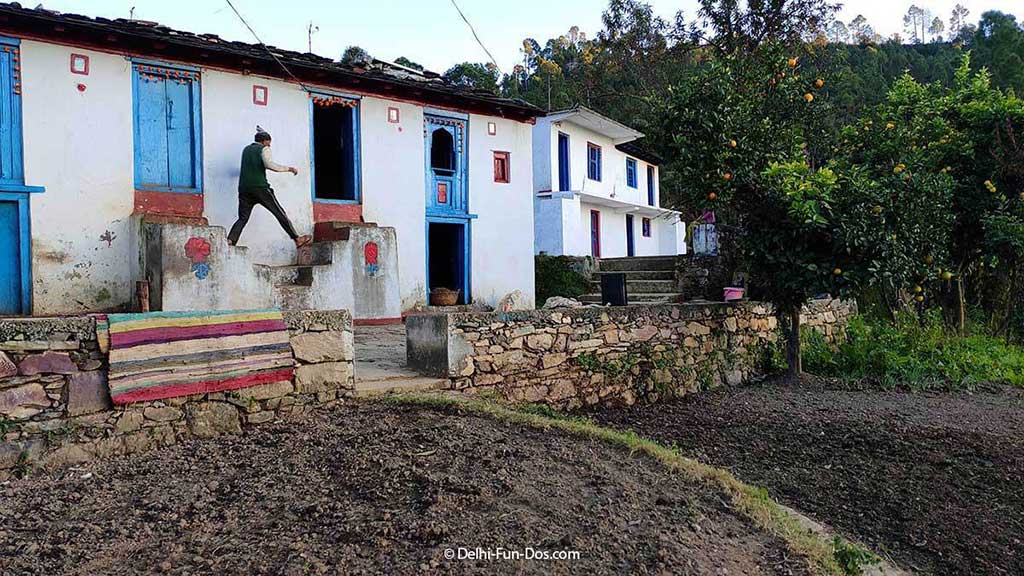
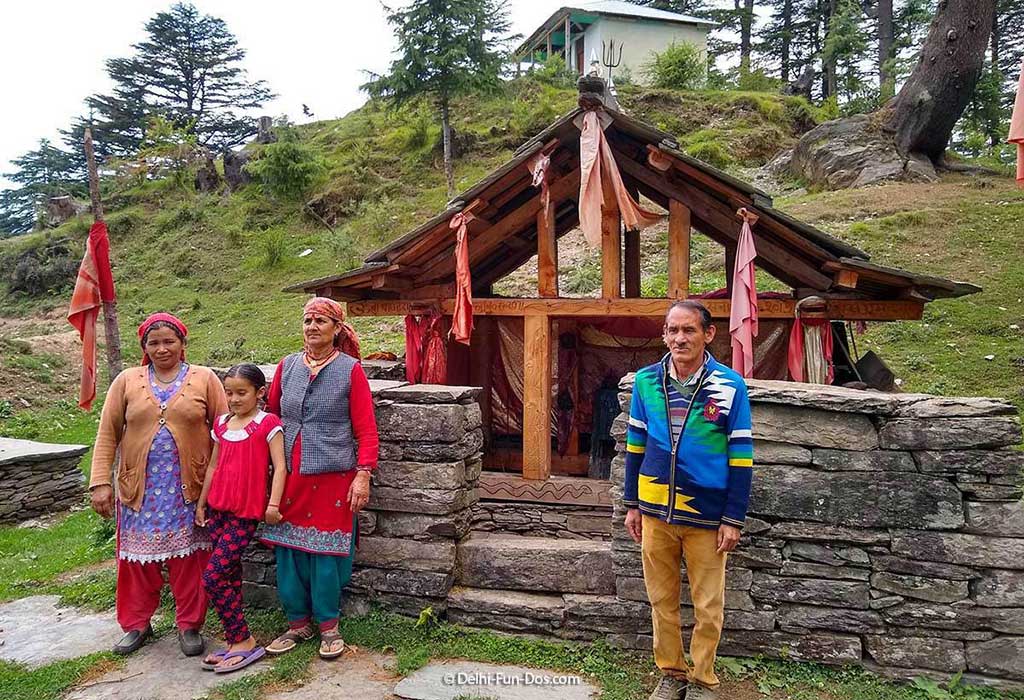
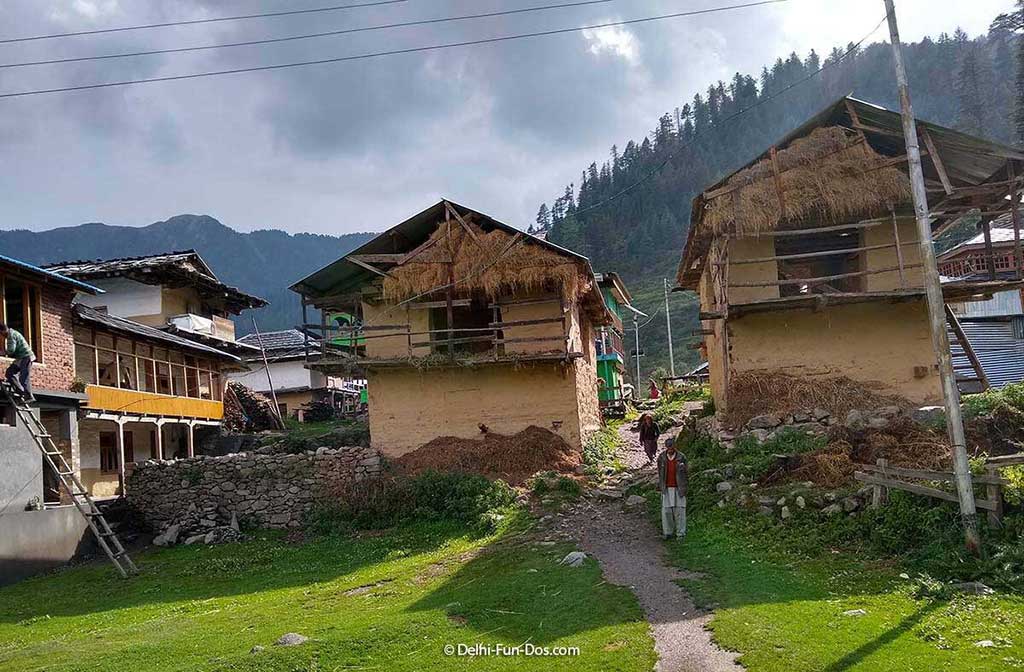



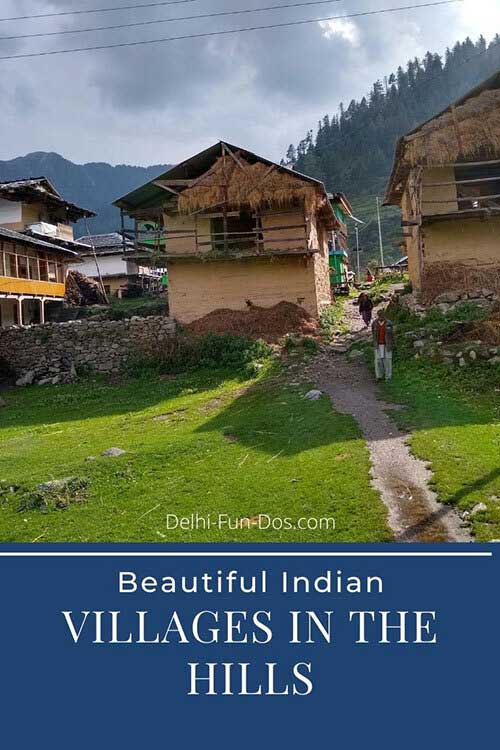

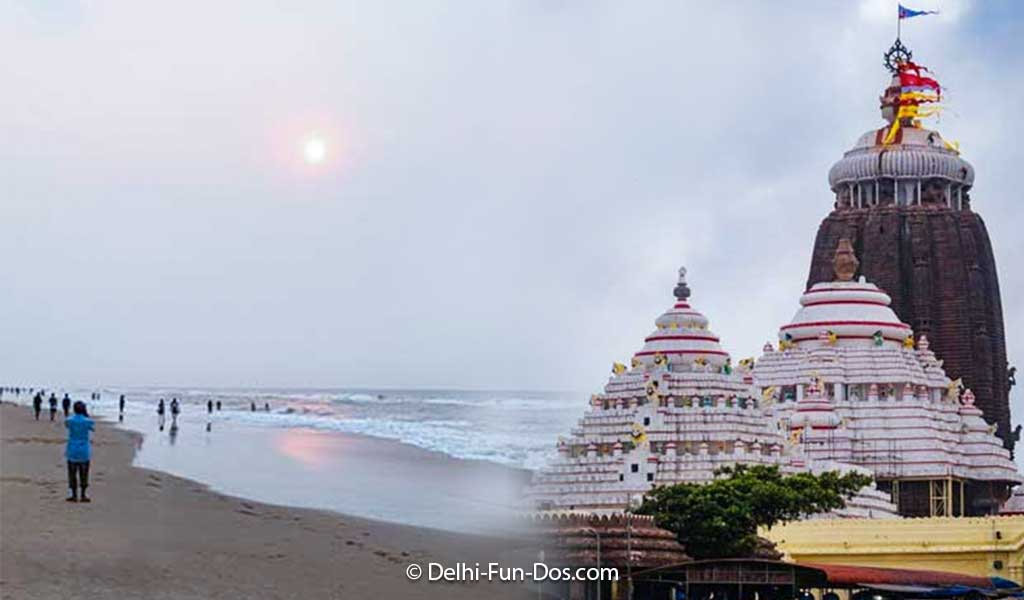
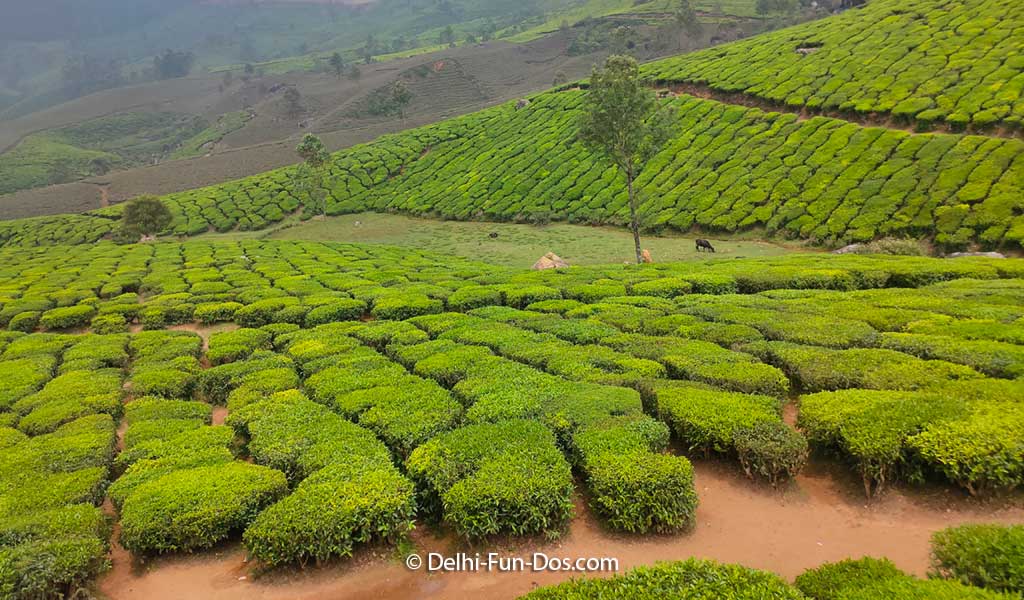
Wow such beautiful landscapes of the villages. I have not been to any of these but would love to visit them if I can. Each village in India have such amazing character and beauty.
Village life is the real rustic life and though I’ve not been to any of the villages that you have mentioned above, I can imagine from the pictures about the life and the beauty it holds.
Lifestyle in Indian villages changes every few kilometres..
Your post increased my craving for village tourism. I have traveled a lot but never got a chance to stay in villages or go for rural tourism. The Sarchi village in Kullu definitely looked like one such experience. I believe a visit to places like these, makes one understand the real meaning of word traveling.
You must do it!
It is always a pleasure to visit the rustic heartland of India. Many of the villages of India still retain their pristine simplicity and innocence. We loved the Himalayan villages that are so much in harmony with nature. Reading your post reminds us of our own experiences in the remote villages of Arunachal Pradesh and Ladakh.
Would want to know more..
I have only been to Sarchi Kullu, that too in 2020 december and it is beautiful beyond imagination. The others you have mentioned I haven’t visited but will add them to my list!
Isn’t yet..
All these places are so gorgeous and so fu of nature. I’ve missed traveling and being around nature so much in the past year and these places are now on my list. Bookmarked your blog.
Thanks. Hope you can visit some of these places and let us know how you felt.
What a wonderful post. I literary loved your writing on snake temple and you village. When v visit certain palce and interact with locals it turns out to be the best experience ever. True that
The snake temple was like modern installation art.
I like this slow travel. These holidays are really worth the time and effort. I would like to go to Pithoragarh and Vijaywada, have been to the other places
You’re absolutely spot on! Even I think that village tourism would pick up in the post corona world. I love that India still has so much to offer in terms of places to see and explore.
Oh my God Sarchi village looks like a fairy tale. I have not visited any of these villages but would love to see them all. They are so beautiful. Hope I get to travel to each one them someday.
Sarchi looks like a painting in 3D.